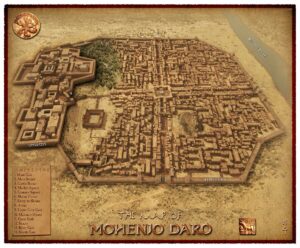Mohenjo-daro! – Harappa
Written by Aniketh Kumar on May 11, 2024
Mohenjo-daro and Harappa were two of the largest cities of the ancient Indus Valley Civilization, which flourished around 2600 to 1900 BCE in what is now Pakistan and northwest India. These cities were major centers of culture, trade, and advanced urban planning during their time.
Harappa, located in present-day Punjab province of Pakistan, and Mohenjo-daro, situated in the Sindh province of Pakistan, were both rediscovered in the 1920s. Archaeological excavations revealed well-planned cities with sophisticated drainage systems, brick houses, and granaries.
Mohenjo-daro, meaning “Mound of the Dead,” was built around 2500 BCE and is known for its impressive urban layout, with streets laid out in a grid pattern and large public buildings, including a great bath and a granary. The city had a complex water management system, with wells, baths, and an advanced sewage system.
Harappa, on the other hand, was discovered in the 19th century. It was a major urban center with similar features to Mohenjo-daro, including well-planned streets, brick houses, and public buildings. Harappa also had a sophisticated drainage system and evidence of trade networks extending to Mesopotamia.
Both cities were abandoned around 1900 BCE for reasons that remain unclear, though theories include environmental changes, natural disasters, or shifts in trade routes. Despite their decline, the legacy of Mohenjo-daro and Harappa continues to fascinate archaeologists and historians, offering valuable insights into the development of early urban civilizations in the Indian subcontinent.
Source: [https://www.britannica.com/place/Mohenjo-daro]








